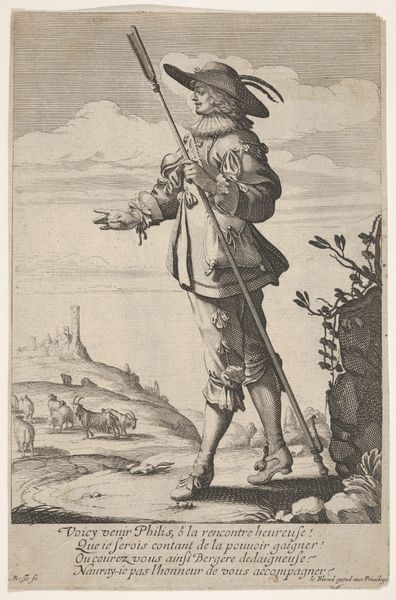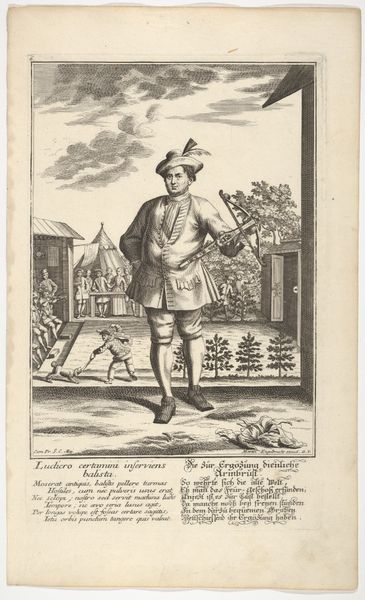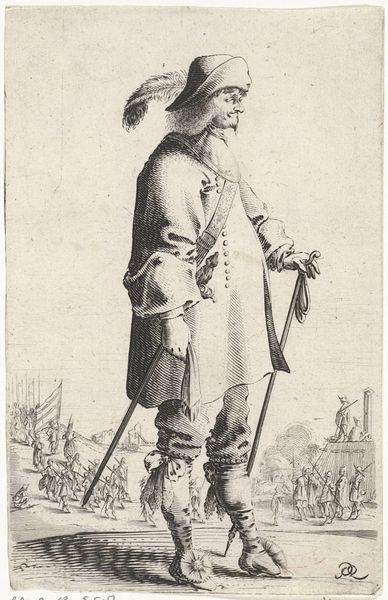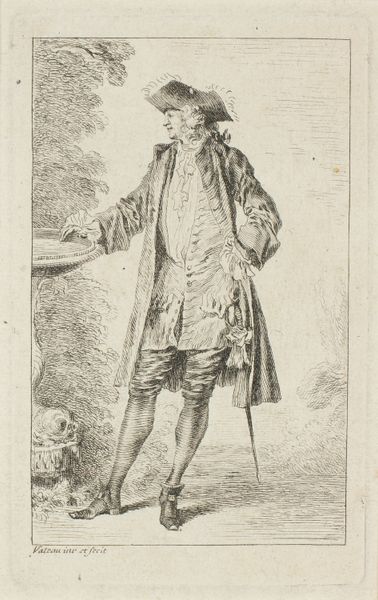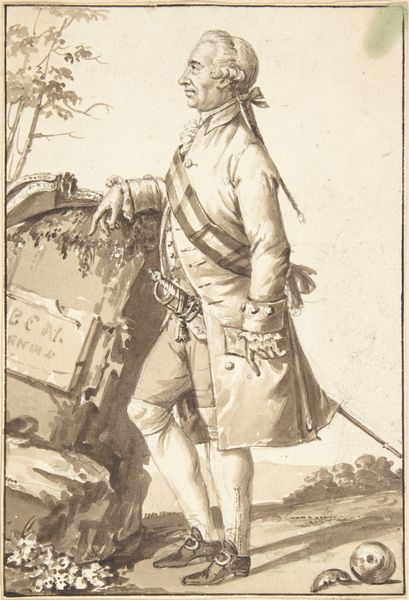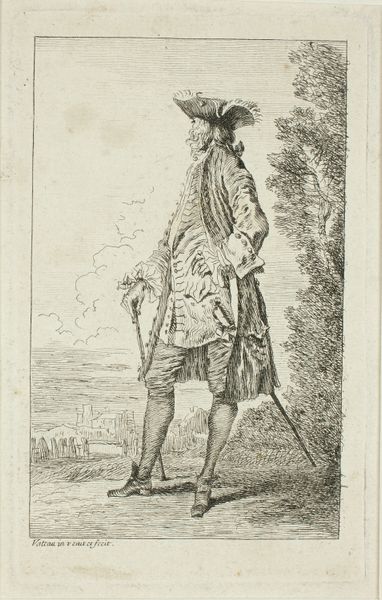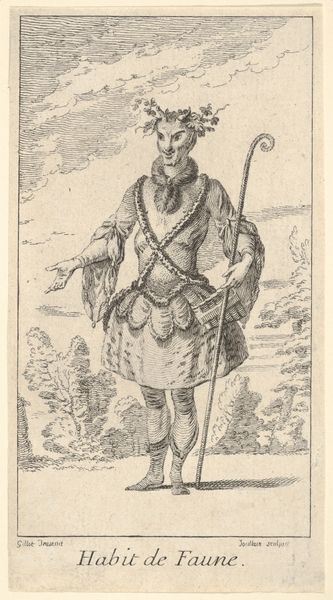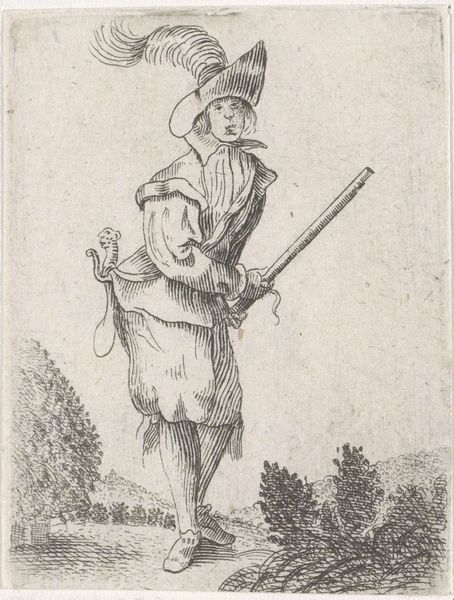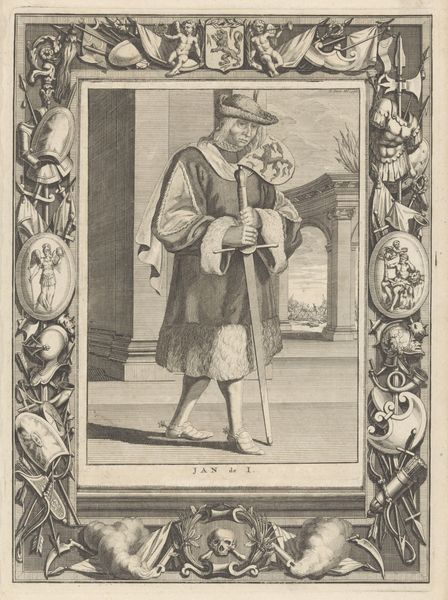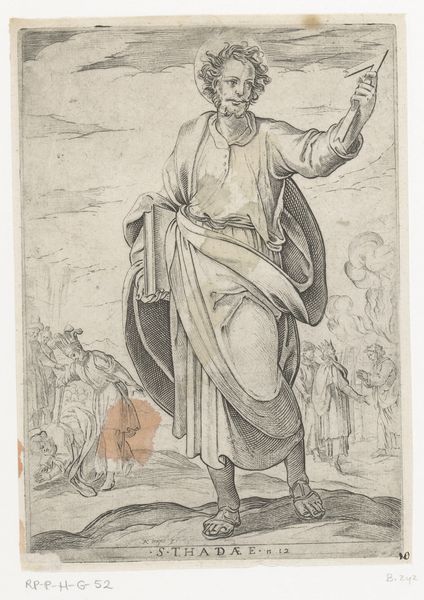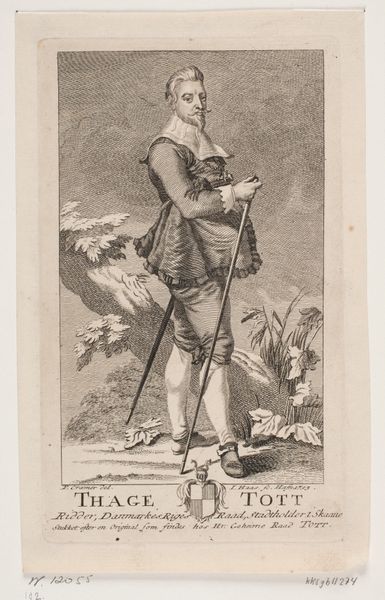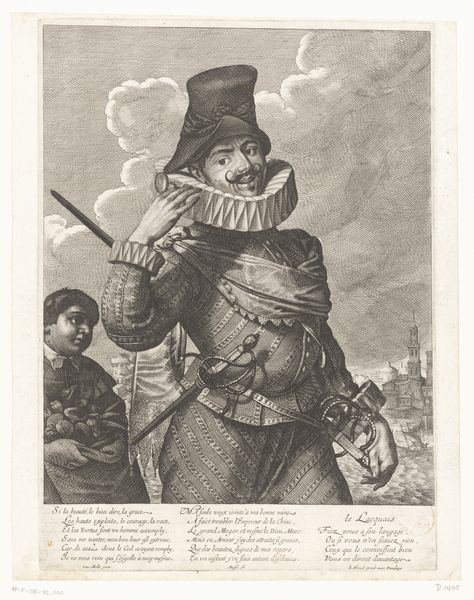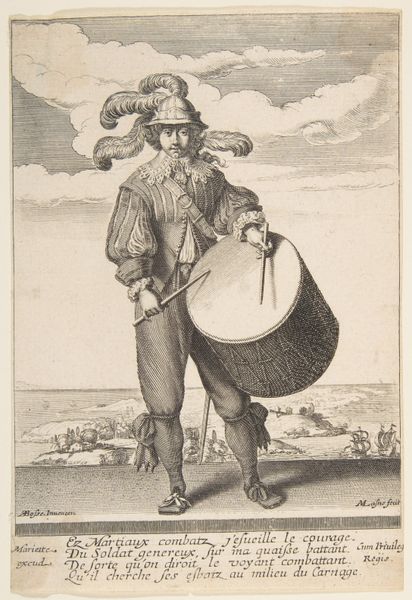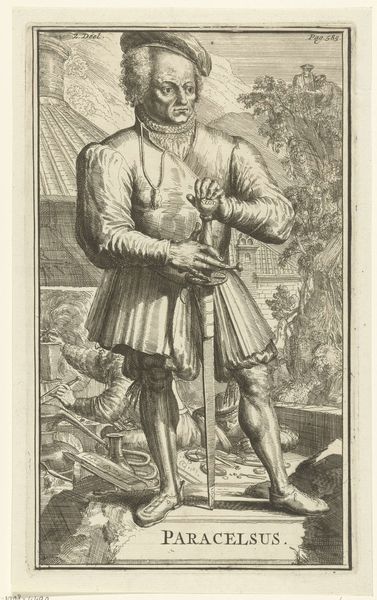
print, engraving
#
portrait
#
baroque
# print
#
landscape
#
caricature
#
history-painting
#
engraving
Dimensions: height 222 mm, width 126 mm
Copyright: Rijks Museum: Open Domain
This print of Henricus Slatius, complete with shackles, was made in 1623 by an anonymous artist. The copperplate engraving technique used to create this print was then the cutting edge of reproducible imagery. If you look closely, you can see how the image is built from thousands of tiny engraved lines. The relative density of these lines creates shading and form. The process involved a skilled artisan using a tool called a burin to carve into a polished copper plate. The plate was then inked, and the surface wiped clean, leaving ink only in the engraved lines. It was then pressed onto paper, transferring the image. Though simple, the process of printing allowed images to be circulated on a mass scale, which made this print a powerful political tool, forever preserving Slatius's likeness in captivity. This process democratized image-making. We can learn how the convergence of materials, making, and context allows us to fully understand and appreciate the cultural significance of this artwork.
Comments
No comments
Be the first to comment and join the conversation on the ultimate creative platform.
